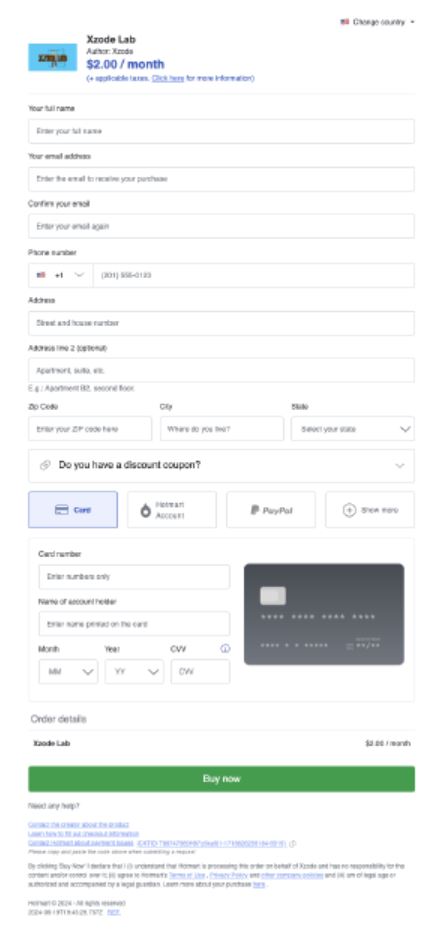Court Upholds a Browsewrap (Because It Was Really a Sign-in-Wrap)–Hoar v. Hotmart
This case involves the Hotmart service, an online marketplace of digital items. The plaintiffs claim they didn’t receive their purchased items and were charged for other unwanted services. Hotmart invoked the venue selection clause in its TOS to try to send the case elsewhere.
It appears this is the TOS formation screen in question:

The hyperlinks to Hotmart’s Privacy Policy are known in the industry as “browsewrap” agreements – agreements “which generally post terms and conditions on a website via a hyperlink at the bottom of the screen” and which “do not require the user to expressly assent.”
No. At best, this is an outdated definition of browsewrap that invites misapplication. As the Ninth Circuit explained in Chabolla, a browsewrap is when a “user accepts a website’s terms of use merely by browsing the site” while with a sign-in-wrap, “the website provides a link to terms of use and indicates that some action may bind the user but does not require that the user actually review those terms.” Per the more accurate Chabolla definitions, the Hotmart screen is clearly a sign-in-wrap and not a browsewrap. UGH.
By misclassifying the screen as a browsewrap, this becomes another case that misleadingly stands for the propostion that browsewraps can be enforceable. Just what we need. 🙄
The court says this (misclassified) “browsewrap” was reasonably communicated to consumers:
The message warning that, “By clicking “Buy Now” I declare that I. .. (iii) agree to Hotmart’s Terms of Use” – together with the blue hyperlink to the Terms of Use – is located just five lines beneath the “Buy Now” button, rather than in a separate quadrant of the screen…Furthermore, Hotmart’s payment screen does not contain similarly distracting uses of font sizes and colors, or promotional advertisements that would obscure the message that clicking “Buy Now” would subject the purchaser to additional terms and conditions.
All of this is true, but the court downplays the impact of the five lines standing between the Buy Now button and the call-to-action. In particular, immediately below the “Buy Now” button is the text “Need any help?” If a consumer thought to themselves “I don’t need any help,” they would stop reading there and proceed with the “Buy Now” button without sorting through the underlying text. As a result, I think the Ninth Circuit’s JustAnswer ruling would hold this TOS unenforceable, i.e., it’s a sign-in-wrap, but the court would say the call-to-action was not reasonably communicated to consumers. In the JustAnswer case, a two-line gap between the action button and the call-to-action was enough to doom the TOS formation.
How easy would it have been for Hotmart to modify its TOS formation process so that it wouldn’t have had to rely on dubious enforceable-browsewrap interpretations? Sigh.
Case Citation: Hoar v. Lauch Pad Payment Services Corp., 2025 WL 1380994 (S.D.N.Y. May 12, 2025).